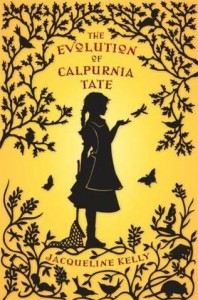
Rilla isn’t sure she likes the look of Virginia Lee Burton’s The Little House. “Hmm.” She eyes it skeptically. “It doesn’t really look Intresting.”
“I think you’ll like it,” I say. “It’s about a big city growing up around this little pink house.”
Pink is the key word in that sentence. She’ll give almost anything a chance, if there’s pink involved.
“Hot pink,” she murmurs approvingly, studying the cover. There is no higher praise.
“Let’s give it a try,” I suggest. “We can read something else afterward.”
“Roxaboxen.”
“Again?”
She has a laugh her sisters call the Evil Chipmunk. “Of course! It’s my favorite book.”
Huck climbs half on top of me and begins to count the trees around the little pink house. He’s very into counting, these days.
I love quiet books like The Little House, the kind that tiptoe their way into a child’s heart. The house is built, the countryside blooms, the seasons change. The sun arcs across the page and this must be pored over, wait, Mommy, don’t turn the page yet. And then the next spread, the calendar of moons. We must pause while Rilla touches each crescent and disk, naming the days. The road comes rolling out from the distant city; that’s Huck’s page to study. Steam shovel, big rocks, little rocks, tar, steamroller. He could stay there all day. But the city is encroaching, surrounding, swallowing the little pink house, and Rilla has picked up the urgency. We have to read quickly now; she needs to know. Trolley line, elevated train, subway, skyscrapers, you can hardly see the poor house.
It’s magical, you know, when the movers come to carry it away. A house on the back of a truck! Both children are astounded at this marvel. They’d have taken unicorns and dragons in stride, but a house riding along the road to a new hill in the countryside: clearly this is a wonder of the world.
Later, when Huck is napping, Rilla pounces on me, brandishing the book. The pink house winks from the cover.
“Again?”
“Yes. It’s my favorite book.”
You know how we feel about the work of Tom Lichtenheld here in the Bonny Glen. Shark vs. Train. Goodnight, Goodnight Construction Site. You can imagine, then, our delight upon receiving a review copy of his latest picture book from his publishers.

E-mergency!—created in collaboration with fourteen-year-old Ezra Fields-Meyer—is another winner. See, the letters of the alphabet all live together in a big house. They come barrelling down the stairs for breakfast and whoops, E misses a step. (This is Huck’s favorite part. “You’re E, Mommy!” And I have to cry “Eeeee!” Then he makes big wide eyes and round mouth: “Oh no!”) E is seriously injured and winds up in the ER (with the help, of course, of EMTs).
Since rest is a vital part of the healing process, the other letters decide to give E a break: O will stand in for his injured pal. That’s when things get wonderfully silly. Cafeteria menus announce “moatloaf” and “groon salad,” road signs proclaim the “spood limit,” and local businesses advertise “danco lossons” and “ico creom.” This is whimsy that tickles my ten-year-old just as surely as it does her younger siblings. The book is filled with comic dialogue and side jokes, increasing its crossover appeal with older kids. And the playful language has utterly entranced Rilla, my emergent reader, who thinks it is hilarious to see what happens to a word when you swap out the vowel.
The ending is perfect. Or should I say: the onding is porfoct?

“Pa!” Mary cried. “They didn’t even wait for my prize tomatoes to ripen. They ate them green!”
“Pa!” little Clarinda said. “What happened to your socks?”
I looked down. Glory be! Those infernal [grasshoppers] had eaten the socks right out of my shoes—green socks. All they left were the holes in the toes.

I next wrote in my Notebook that we had two very different kinds of grasshoppers that summer. We had the usual quick little emerald ones decorated all over with black speckles. And then there were huge bright yellow ones, twice as big, and torpid, so waxy and fat that they bowed down the grasses when they landed. I had never seen these before. I polled everyone in the house (except Grandfather) to find out where these odd yellow specimens had come from, but nobody could tell me. Not of them was the slightest bit interested.
As a last resort, I rounded up my courage and went out to my grandfather’s laboratory. I pushed back the burlap flap that served as a door and stood quaking on the threshold. He looked up in surprise from the counter where he was pouring a foul-looking brown liquid into various beakers and retorts. He didn’t invite me in. I stumbled through my grasshopper conundrum while he stared at me as if he was having trouble placing me.
“Oh,” he said mildly, I suspect that a smart young whip like you can figure it out. Come back and tell me when you have.”
Two grasshopper stories: not a coincidence. I started reading Calpurnia to Rose and Beanie today (with Rilla listening in and, after a bit, curled in my lap picking out words Scout Finch-fashion), and when it came time for me to read a story to Rilla, I went straight for McBroom. If I’d thought about it in time, I’d have hunted up Joyful Noise: Poems for Two Voices; there’s a grasshopper poem in there, I’m sure. In fact, I can picture a hopper on the cover. Maybe tomorrow. Today has rolled on to the next thing. Polly Pockets for those three girls, and the Shakespeare kids coming in a bit to work on costumes for our Twelfth Night performance.
Related post: Sciency fiction and nonfiction
More about McBroom: Hoppers
More about Calpurnia Tate: Our first encounter; Naturalists in literature

More book recommendations here.




